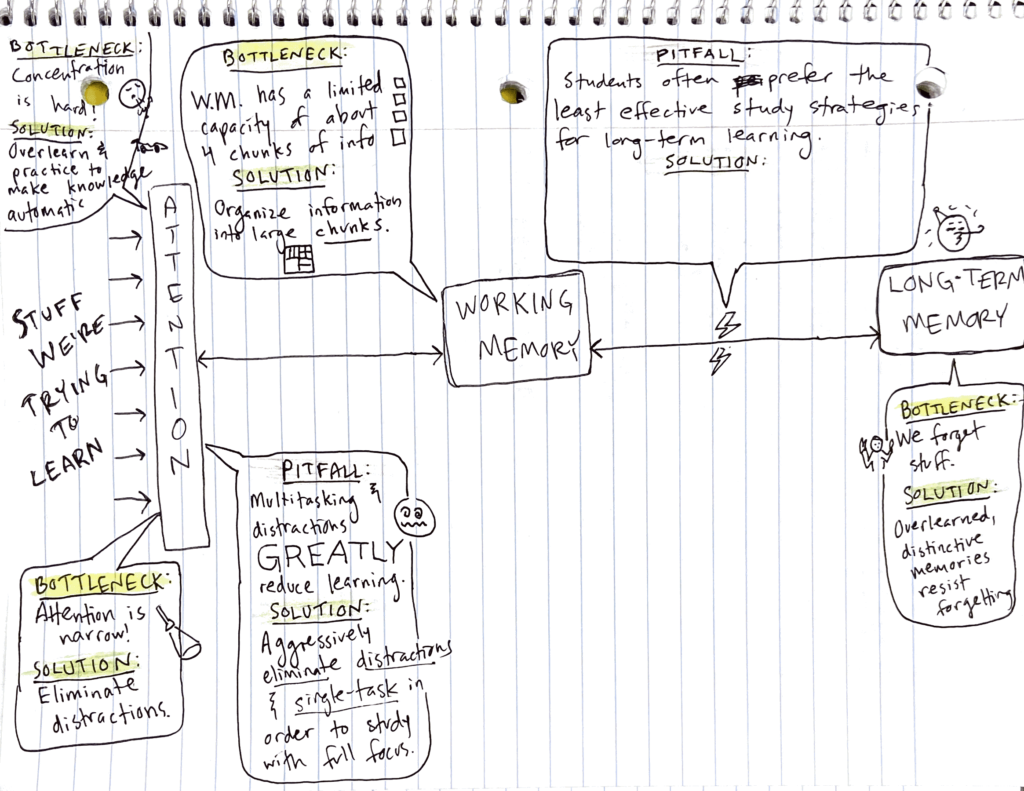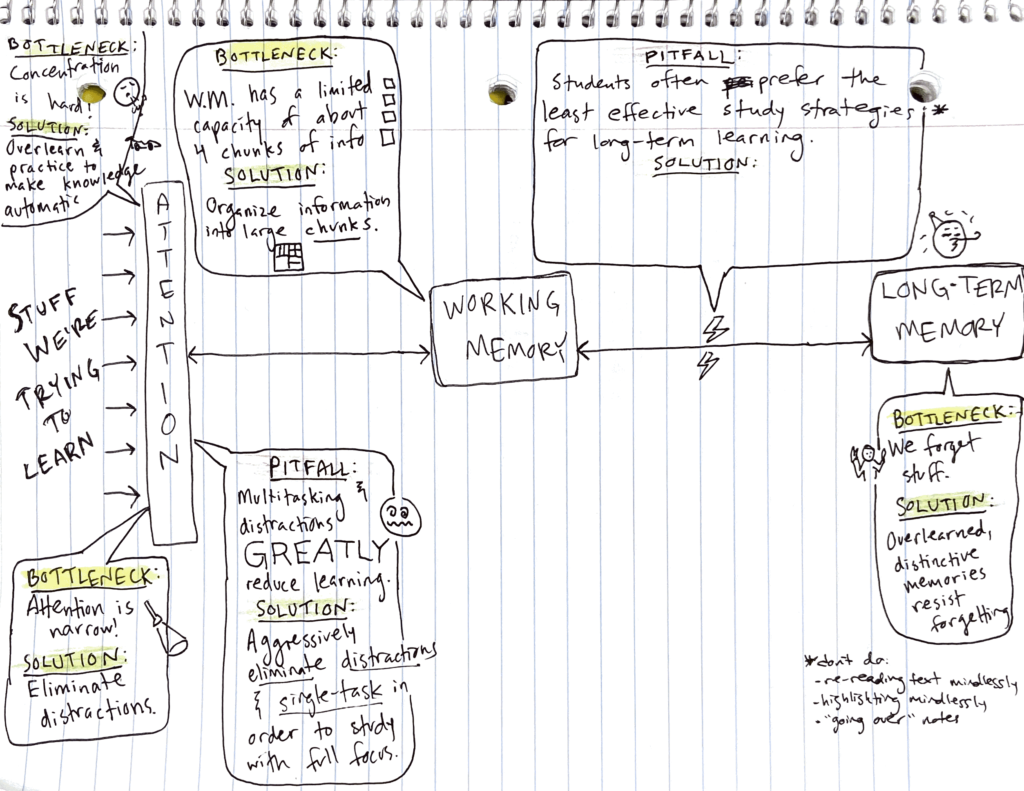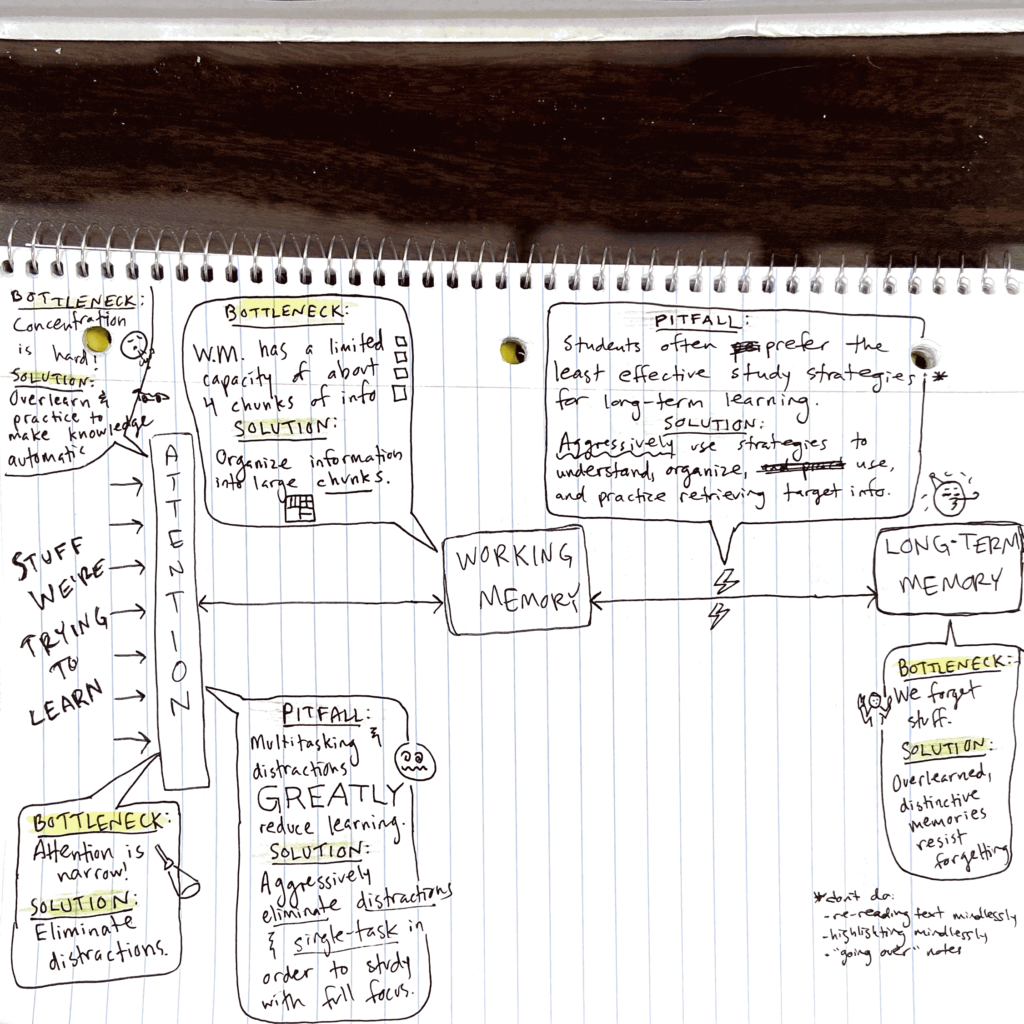Hey there, colleague! What follows is a mini-lesson that teaches secondary students how to learn more effectively. It's part of a series, which you can access right here. When we teach students about learning, we empower them to work smarter and get better results for their effort. This is massively important for cultivating the five key beliefs beneath student motivation.
Without further ado — here's today's post! -DSJR

Notes out! As you're withdrawing them, quick, with your partner:
- What was yesterday's pitfall and solution?
- What are the four bottlenecks and their solutions?
Good. That review is so key for us — for reasons that we'll get to TODAY! Yahoo!
Today's pitfall from Dr. Chew is this: Students often prefer the least effective study strategies for long-term learning. Let's get it down, and then let's talk about strategies that work and strategies that don't.

Okay — what are these supposedly popular learning strategies that don't work? Here's what Dr. Chew shares in his video:
- Mindlessly re-reading the text
- Mindlessly highlighting the text
- Staring at your pages of notes (often called “going over my notes”)
Let's add these to our diagram — I don't have a ton of room up top, so I'm going to use a little asterisk guy and write them tight along the bottom.

Now notice a commonality between the three of these: all of them are kind of passive.
Remember how fired up I got yesterday talking about being aggressive? That's the opposite of passive.
I think one reason that these study strategies are so popular is that they are pretty easy.
- You're rereading something that you've already read, or you're looking over notes you've taken; it looks familiar; you start to feel like you know this stuff.
- You're highlighting things, and when you go back and see that highlighted page, it kind of looks done; in your mind it's like, “Check — done. I learned that.”
Now that easiness thing is so tempting for us if you think back to our bottlenecks. Concentration is hard! So it's nice to concentrate for a bit on some old notes, looking them over, and starting to get this feeling of familiarity.
The trouble, of course, is that being familiar with your notes doesn't mean that you've learned the course material. You've just built some vague pictures in your mind of what the notes look like, or what your highlights look like, or what the pages of text look like.
But that's not even close to the same thing as learning.
The solutions, then are to basically get AGGRESSIVE with understanding what the heck you're supposed to learn and getting that information organized in your mind.
Here's what Dr. Chew says does work — and he's corroborated by every cognitive scientist I've learned from over the past ten years, ya'll.
- As you're studying, focus on creating meaning — on understanding what you're trying to learn about.
- Organize information into meaningful chunks (notice that this helps with Bottleneck #3 re: Working Memory!).
- Elaborate on the information you're learning — try to make connections between it and other things you know.
- Practice recalling the information and using it — in conversations with fellow students or the teacher, in your writing for the class, or in imaginary lectures.
There's a lot there, right? Let's summarize that list in our little speech bubble for this pitfall:

All right. Throughout this course, I'm going to keep trying to help you develop ways of doing these things. But for now, the big understanding for today is that not all learning strategies work the same — some work really poorly! And we want to avoid those.
And UNDERSTANDING is our FRIEND. We love you, understanding. We love you. You're the best.
Note from Dave: This article is part of a series of mini-lessons designed to improve student motivation by cultivating the Effort and Efficacy beliefs. More on the series here; more on the idea of the five key beliefs here.
Leave a Reply